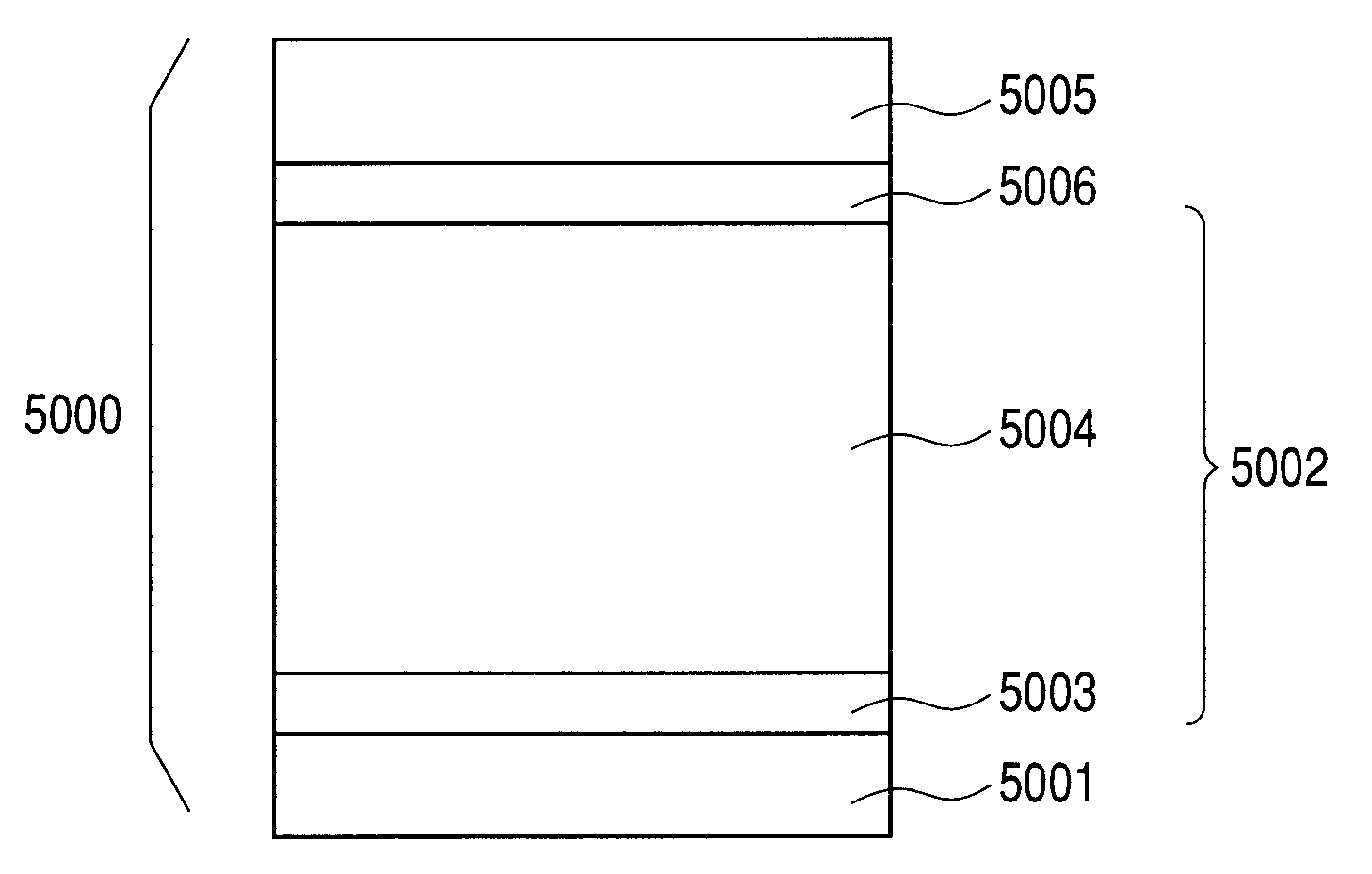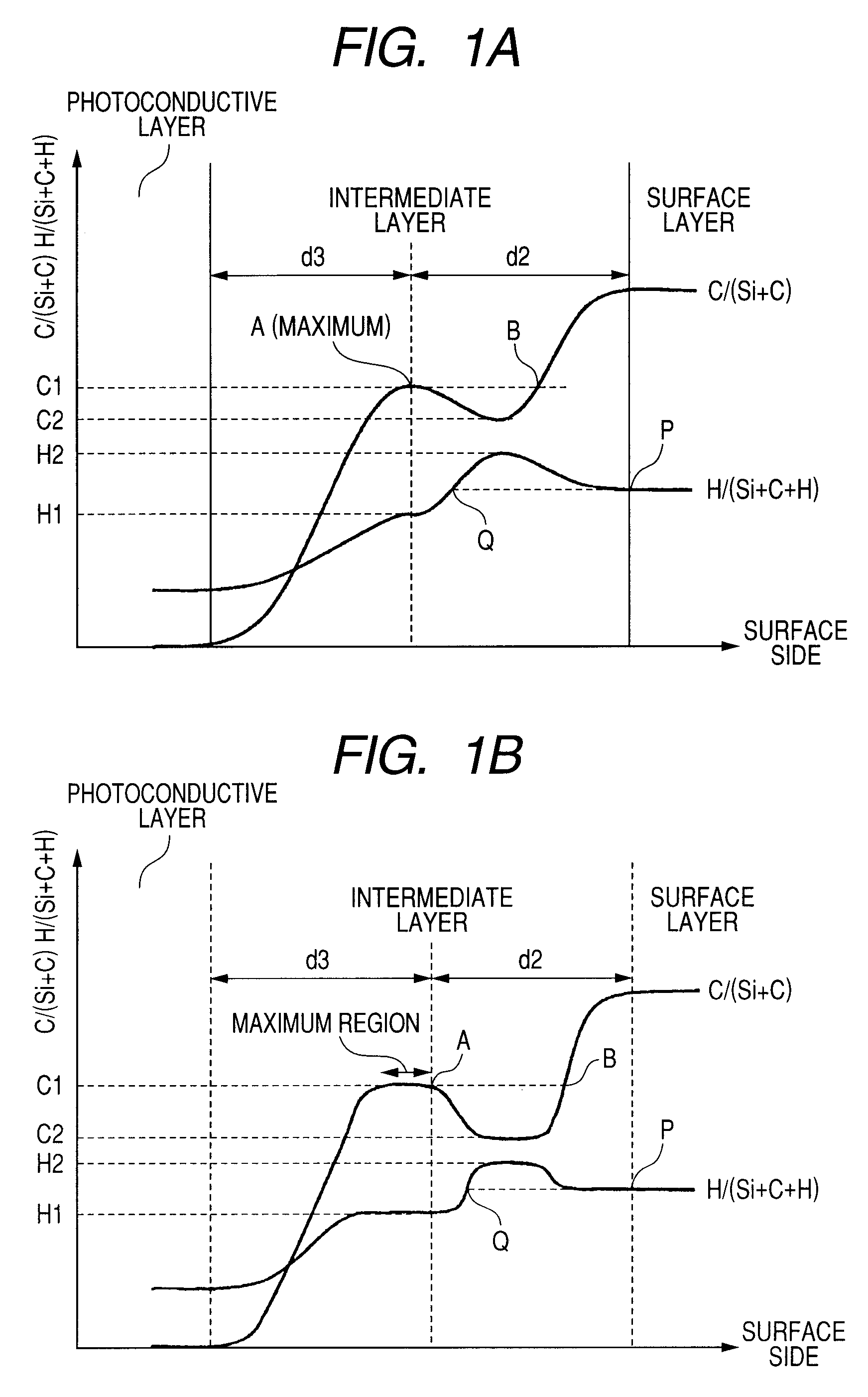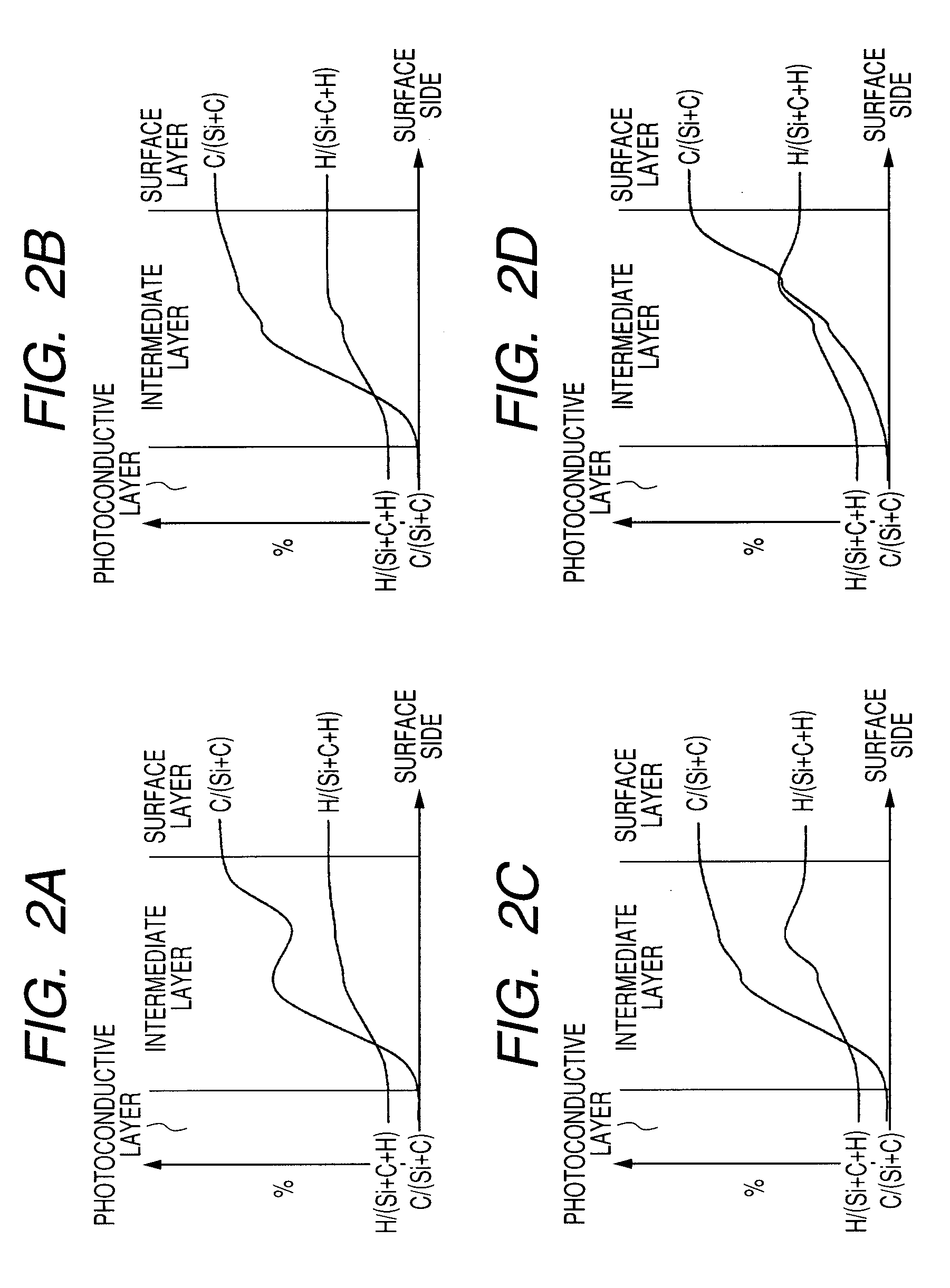Electrophotographic photosensitive member and electrophotographic apparatus
- Summary
- Abstract
- Description
- Claims
- Application Information
AI Technical Summary
Benefits of technology
Problems solved by technology
Method used
Image
Examples
experimental example 1
[0079]By using the plasma processing apparatus shown in FIG. 3 using a high-frequency power supply in a RF band as a frequency, a charge injection inhibition layer and a photoconductive layer were formed under the conditions shown in the following Table 1 on the cylindrical substrate (cylindrical aluminum substrate with mirror machining applied of a diameter of 80 mm, a length of 358 mm and a thickness of 3 mm). After the photoconductive layer was formed, a positively chargeable a-Si photosensitive member was produced under the conditions shown in the following Table 4 by using the intermediate layer forming conditions shown in the following Table 2 and the surface layer forming conditions shown in the following Table 3. At this time, with respect to Nos. 1 and 2 of the layer forming conditions of the following Table 4, in a variable layer 1, the layer formation time was regulated so that the layer thickness was 0.20 μm, and the internal pressure and the high-frequency power were se...
example 1
[0094]By using the plasma processing apparatus using a high-frequency power supply in an RF band as a frequency illustrated in FIG. 3 as in experimental example 1, the charge injection inhibition layer and the photoconductive layer were formed on the cylindrical substrate under the conditions shown in the above described Table 1. After the photoconductive layer was formed, the surface layer was formed under the conditions of the layer forming condition No. 3 shown in the above described Table 4, and five positively chargeable a-Si photosensitive members were produced. At this time, the layer thickness of the surface layer was regulated to be 2.00 μm. The intermediate layer forming conditions in the layer forming condition No. 3 shown in the above described Table 4 are shown in the above described Table 2. With respect to the five electrophotographic photosensitive members produced according to example 1, the surface roughness was measured under the conditions which will be described...
example 2
[0118]Similarly to example 1, a plasma processing apparatus using a high-frequency power supply in an RF band as a frequency illustrated in FIG. 3 was used, and the charge injection inhibition layer, the photoconductive layer, the intermediate layer and the surface layer were formed in sequence on the cylindrical substrate in the conditions shown in the following Table 7. At this time, the intermediate layers were formed under the conditions described in the layer forming condition No. shown in the following Table 9 by using the intermediate layer forming conditions shown in the following Table 8, and seven positively chargeable a-Si photosensitive members were produced under the respective layer forming conditions. Further, the layer thickness of the surface layer was formed by being adjusted to be 2.00 μm for five of the produced electrophotographic photosensitive members, 0.30 μm for one of the produced electrophotographic photosensitive members, and 0.05 μm for the remaining one...
PUM
 Login to View More
Login to View More Abstract
Description
Claims
Application Information
 Login to View More
Login to View More - R&D
- Intellectual Property
- Life Sciences
- Materials
- Tech Scout
- Unparalleled Data Quality
- Higher Quality Content
- 60% Fewer Hallucinations
Browse by: Latest US Patents, China's latest patents, Technical Efficacy Thesaurus, Application Domain, Technology Topic, Popular Technical Reports.
© 2025 PatSnap. All rights reserved.Legal|Privacy policy|Modern Slavery Act Transparency Statement|Sitemap|About US| Contact US: help@patsnap.com



